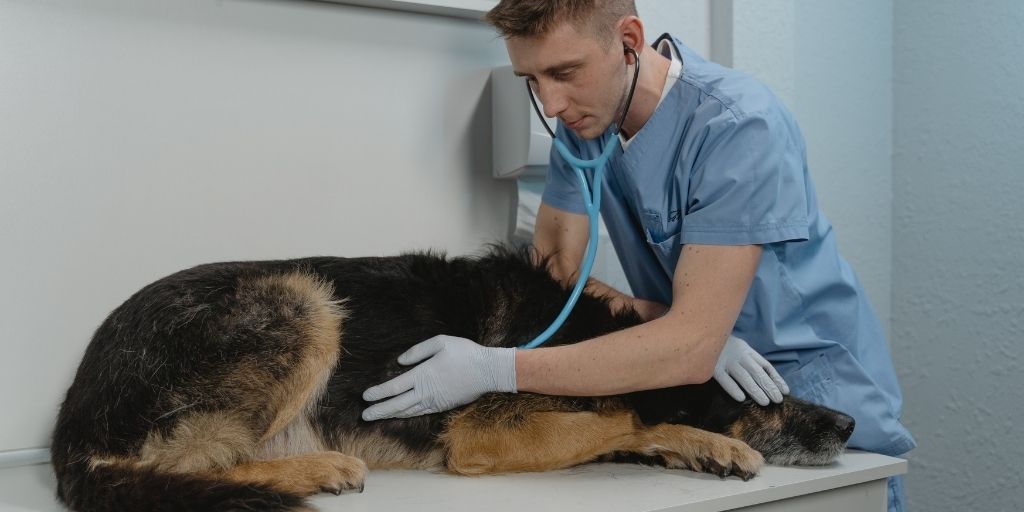How to Treat Ringworm in Dogs and Cats

Ringworm is a common infection in both dogs and cats, but how can it be treated effectively? Understanding this infection and its treatment options is the best way to keep your pet free of ringworm.
What Is Ringworm?
Though its name conjures up thoughts of long, wriggly parasites, ringworm actually has nothing to do with worms. Ringworm is a fungal infection of the skin and fur, caused by dermatophytes and scientifically known as dermatophytosis. A ringworm infection is unsightly but generally harmless, though a bad case can become uncomfortable for a pet.
More than 40 types of fungus can cause ringworm, and this infection is highly contagious. Many other pets, including rabbits and other rodents, as well as horses and livestock, can catch ringworm, and it is also contagious to humans. Because it is easily transmitted and can rapidly spread to other pets and family members, it is important to identify ringworm quickly and treat it properly.
Identifying Ringworm
A pet with a very mild case of ringworm may not show obvious symptoms of infection. Once ringworm becomes more established, however, different symptoms may appear, including…
- A round, red or grayish inflamed patch on the skin
- Scaly lesions that may become irregularly shaped over time
- Patches of hair loss or brittle fur that breaks off easily
- Brittle or scaly nails
While ringworm is not usually itchy to a pet, a bad infestation can cause itchiness. Because the overall symptoms can vary and may appear similar to Cushing’s disease, allergies, hypothyroidism, or even a nutrient deficiency in the pet’s diet, a veterinary diagnosis is necessary to confirm ringworm. The vet will first examine the pet’s skin and fur, then may conduct an ultraviolet test, examine a skin or fur sample under the microscope, or grow a culture of the skin in order to determine the exact fungus causing the infection. Knowing which fungus is responsible for the ringworm infection can help ensure the proper treatment to cure the infection more quickly.
Treating Ringworm in Dogs and Cats
Once a proper diagnosis has been made, there are several types of treatments for ringworm.
-
Topical Treatments – Medicated ointments, creams, shampoos, or dips can be used to treat ringworm. Clipping or shaving the pet can help treatments reach the skin more easily, though treatments may need to be repeated for several weeks to ensure the fungus is eradicated.
-
Oral Medications – Ringworm medications are available in both pill and liquid forms, and may need to be administered with a meal depending on the fungus to be treated. The course of medication often continues for several weeks for thorough treatment.
- Environmental Decontamination – Because ringworm fungus can live up to 18 months and still cause infection, thorough cleaning and disinfecting of bedding, carpeting, furniture, flooring, grooming tools, toys, and anything else the pet may come into contact with is necessary to minimize reinfection. Ideally, the pet should be isolated while this decontamination happens to prevent reinfection or spreading spores throughout the house.
Because ringworm is easy to spread and pets can quickly become reinfected, all three types of treatment may be used to ensure thorough eradication of the fungus. Even though the pet may seem cured and may not show any visible symptoms after treatment begins, it is critical to continue the entire course of treatment as prescribed by the veterinarian in order to eliminate the fungus.
Preventing Ringworm
Ringworm is very common and widespread, and young puppies and kittens, senior pets, or any immunocompromised pets are especially vulnerable to infection. To prevent ringworm, it is best to keep a clean, healthy environment by thoroughly vacuuming, cleaning floors, and washing bedding and grooming tools regularly to eliminate any fungal spores before a cat or dog can catch ringworm.
Providing pets with a nutritious diet that supports healthy skin and fur can also minimize the risk of ringworm, as the pet will be better able to fight off any infection. Keeping a pet’s nails clipped can also minimize ringworm, since this infection often lives in a pet’s nails. Finally, avoiding exposure to unknown animals, including outdoor stray and feral cats, can help keep a pet from getting infected.
It can be disconcerting if a pet catches ringworm, but while this infection may be very contagious, it isn’t impossible to eliminate. By recognizing ringworm in dogs and cats right away, the fungus can be properly treated and pets will be more comfortable, healthier, and happier in a clean and ringworm-free environment.
- Choice Pet Admin
